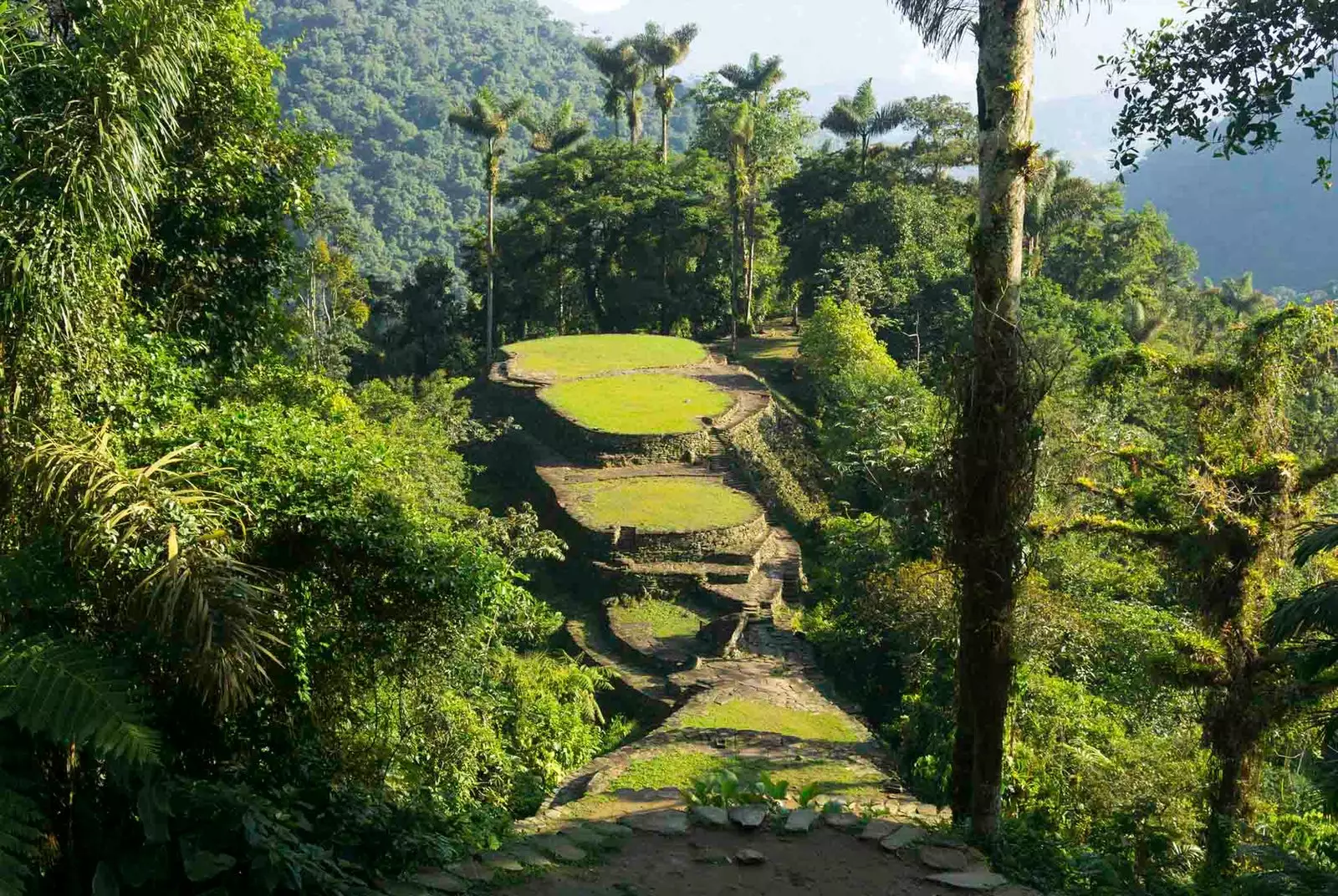
The mythical Lost City
The indigenous people of the Sierra Nevada of Santa Marta They explain that they always knew where the Lost City. Or so they say mamos elders, the spiritual leaders of the communities Wiwa, Kogi and Arhuaco that inhabit this mountainous massif in the north of Colombia . The "discovery" of Teyuna -indigenous name of the place- in the decade of 1970 by treasure looters It was, above all, an unfortunate coincidence, they point out.
After the passage of guaqueros, this sacred place lost the glitter of gold and material riches. On the other hand, almost half a century later, it can be said that the magic of this impressive archaeological site still intact. The Lost City literally hides in the middle of one of the best preserved rainforests of the South American country. And to get here there are no roads or paths for motorized vehicles.
The only way to do it is after three days walking on a path that passes through the northern part of the Sierra Nevada, within a natural reserve jealously protected and born practically on the shore of the Caribbean Sea. A path full of steep climbs, indigenous people, mud and sweat which is a challenge and gift in itself. With the culmination of one of the pre-Columbian cities better maintained of the continent.
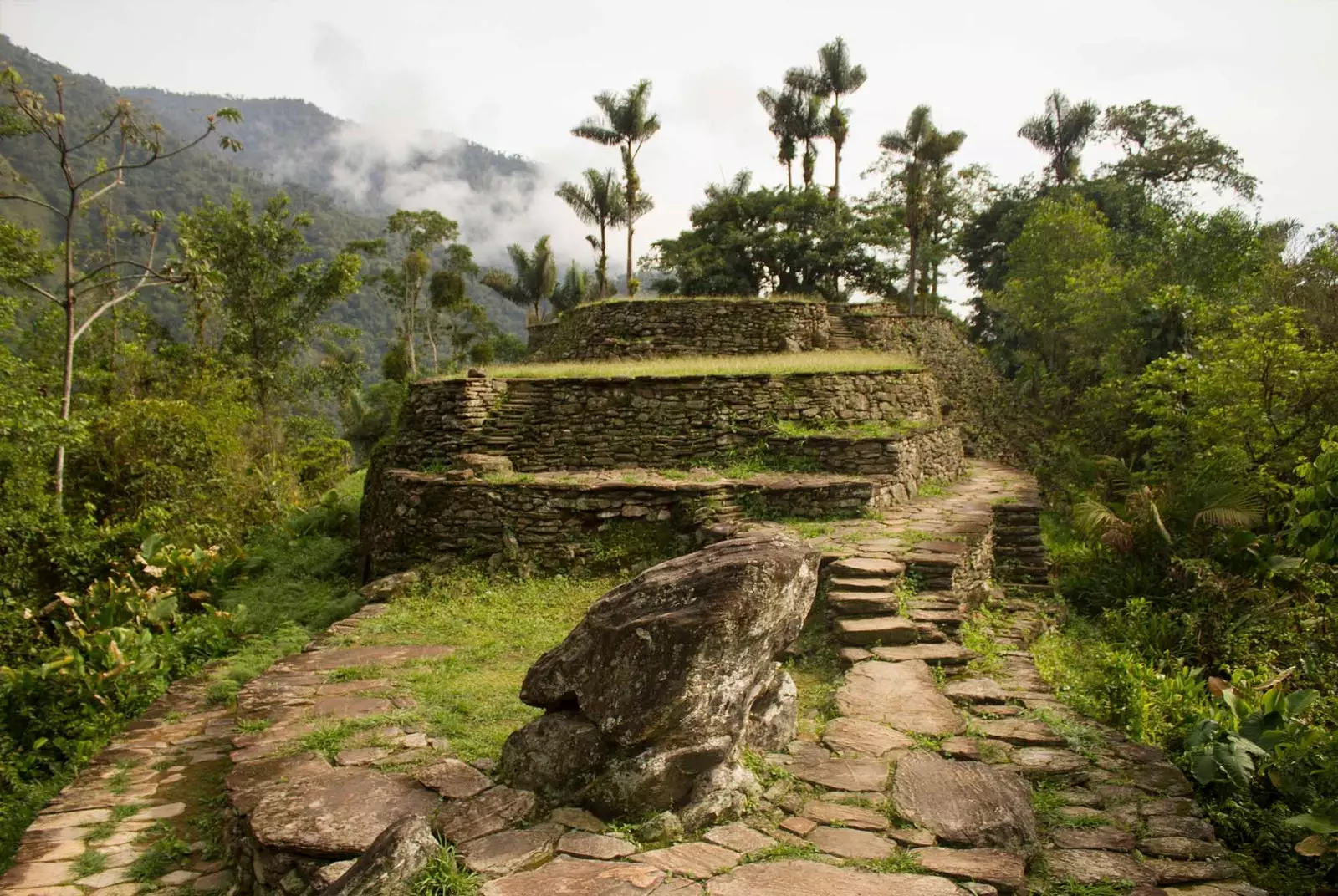
One of the best maintained pre-Columbian cities on the continent
A CITY IN THE MIDDLE OF THE JUNGLE
If we start at the end, we must talk about the origins of Teyuna. This city Built by the Tairona Indians in the 7th century AD. came to house between 1,500 and 3,000 people . The archaeologists of Colombian Institute of Anthropology and History (ICANH) believe that it was part of a network of hundreds of towns scattered throughout this area of the mountains, connected by intricate paths in the middle of the jungle, reflecting the complexity of this civilization.
What they are certain of is that they were made here for centuries rituals, celebrations and political events . It was like that until XVI, when the tairona they disappeared of the map decimated, it is believed, by the bloody war that they maintained with the Spanish conquerors and their diseases . Some say they fled to even more isolated from the Sierra Nevada; others point out that they vanished forever without a trace.
Teyuna then emptied itself and the jungle ended by engulf its circular terraces, its stone dwellings and its monuments to Mother Earth. Until the second half of the 20th century, when the younger brothers -term with which the natives refer to the man of the city- ran into the place and renamed it as the lost City.
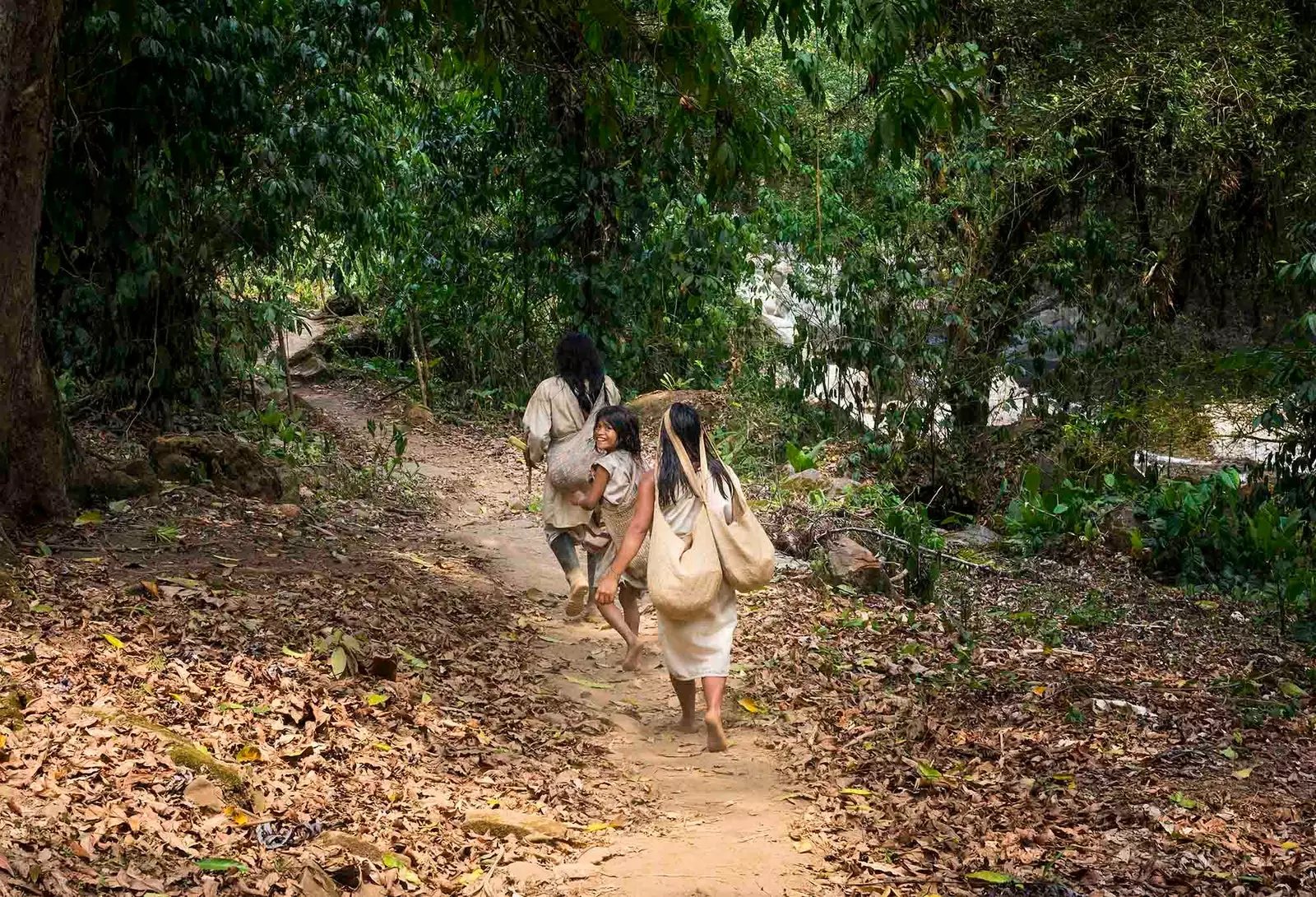
The indigenous Kogui still inhabit these lands
THE SIERRA NEVADA KIDNAPPING
Although the first archaeologists reached the slopes of Teyuna half a century ago, the site and its magical surroundings continued for decades off the beaten track . The Sierra Nevada was for too many years another of those areas of Colombia kidnapped by violence. The plantations of Coke and the presence of the guerrilla first and the paramilitaries later, they broke the peace of this Biosphere Reserve , a recognition granted by UNESCO in 1979.
Today, the soldiers with rifles who receive the visitor in the Lost City explain that the place is Completely sure . And that their presence responds more than anything to the need to protect the site before the possible madness of a tourist, perhaps in a trance after the three-day walk and the final ascent of 1,200 steps that lead to the door of the old Tairona city.
There appears, then, in an uneven row, the succession of terraces built by the natives to circumvent the enormous unevenness that draw the slopes of this mountain range. And the stone paths that connect with each other, dotted with towering palm trees, taguas and other tropical trees. It's easy be overwhelmed in a place like this and before a landscape like this.
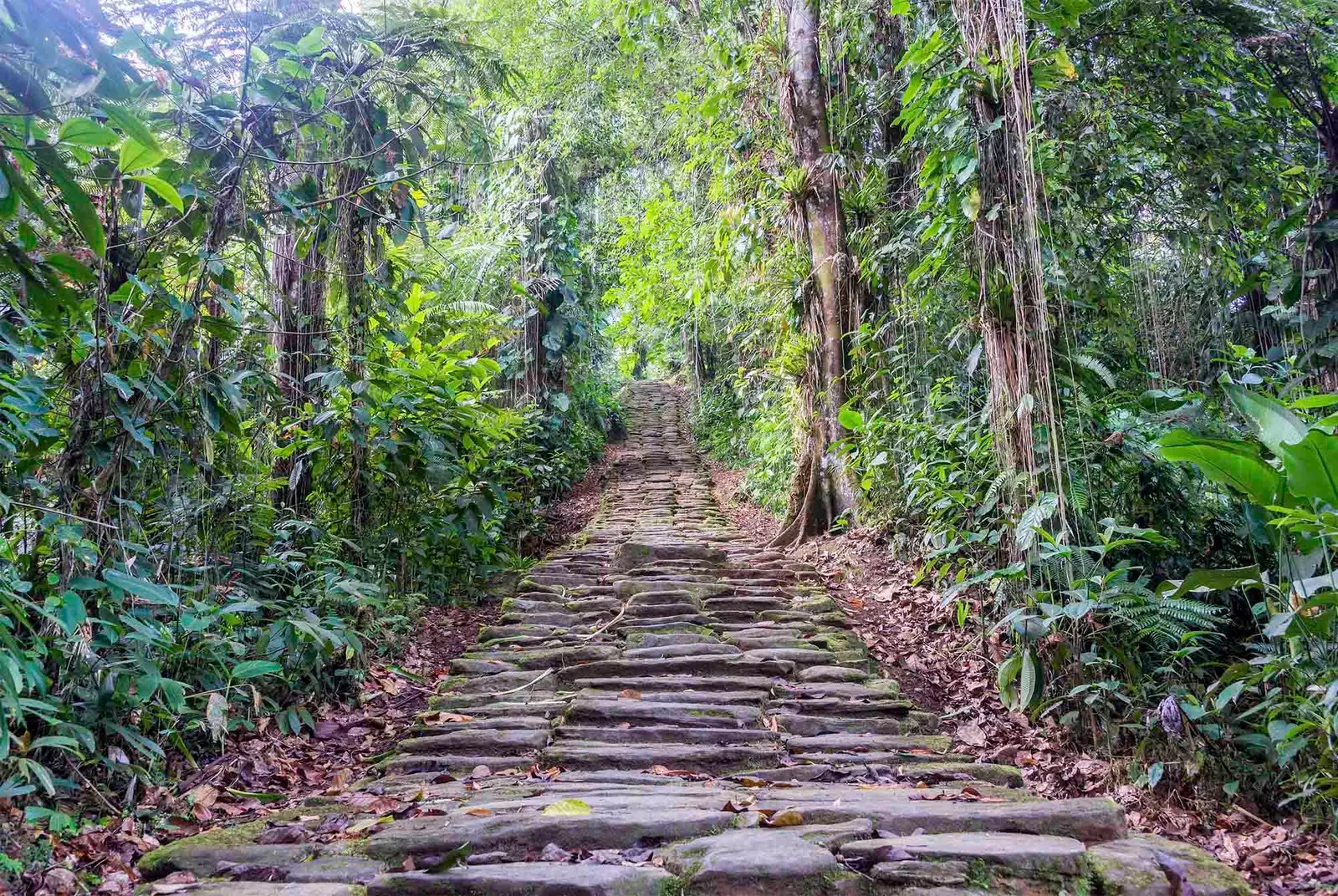
1,200 steps worth climbing
A DEMANDING ROUTE FULL OF REWARDS
But if we go back to the beginning of the route (or to the end: at the end of the visit to Teyuna, it's time to return by the same way we arrived), it goes without saying that the walk that this trip requires is equally full of rewards. The main one may be that tranquility that allows spending four days and three nights -the route can also be done in five or six days, but the total route does not vary- isolated in the middle of the jungle.
Practically from the starting town, mamey , ** the mobile signal disappears .** On the first day, the landscape is of less profuse vegetation and the heat hit without hesitation. But as you go up, rain forest it engulfs the road, at the same time that the rivers that come down from the mountains appear and disappear on the sides of the path.
At the equator of the second day, the town of Mutanzhi , a small kogui indigenous community full of traditional houses with thatched roofs. From here, and up to the Lost City, it is usual to cross paths with women, men and children, some climbed or leading from the reins to a mule , dressed in their typical white suit. It is the clothing of Wiwa and Kogui ethnic groups, and one of the various references in their culture to the snowy peaks of this mountain range from which they feel protective.
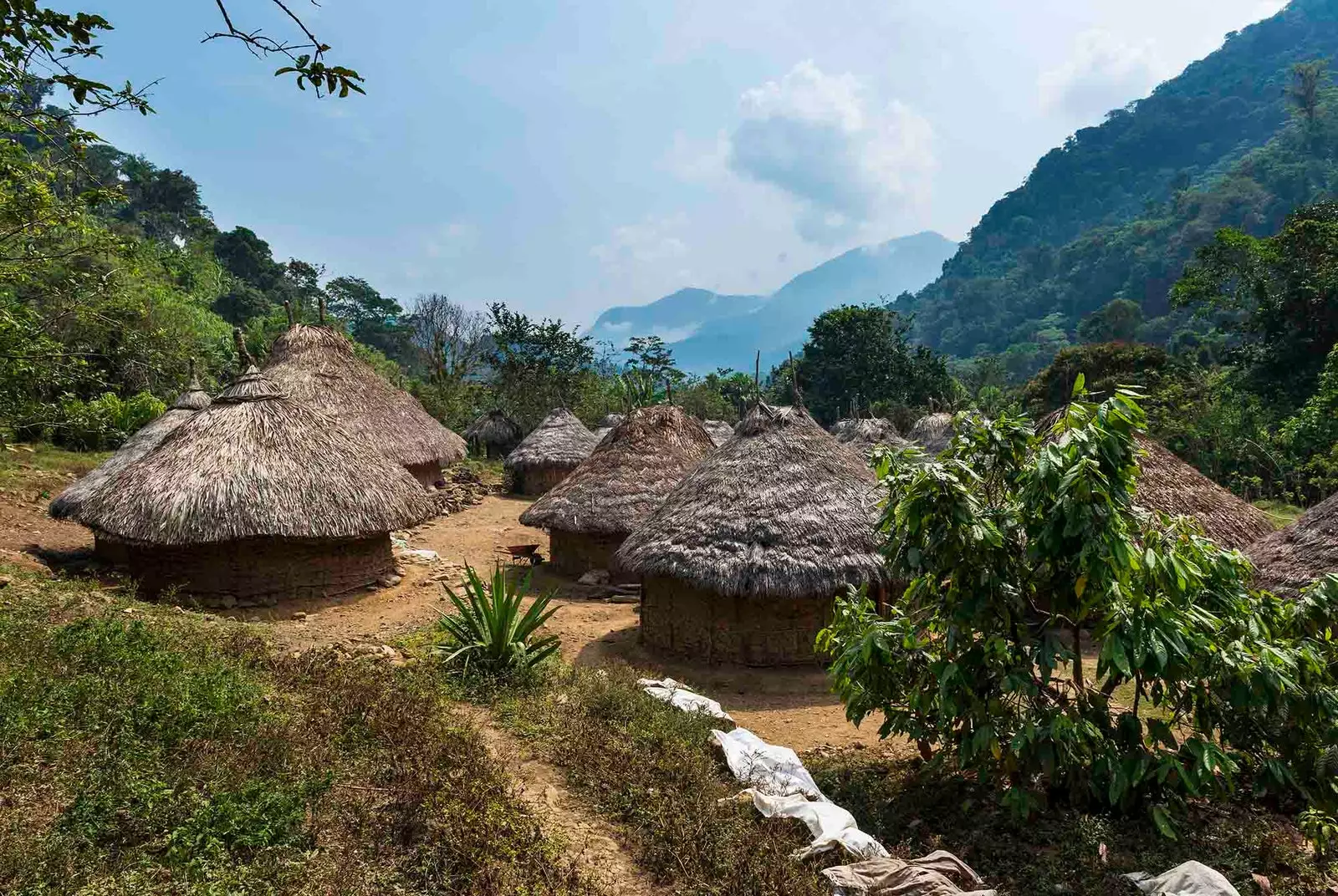
The villages of the indigenous Kogui dot the road
GUIDE, ACCOMMODATION AND FOOD
The Teyuna Archaeological Park and the path that leads to it are within a territory over which the indigenous peoples claim special Rights, as descendants of the settlers who inhabited it in the past. Added to this is the condition government-protected natural area Colombian that has the area.
Therefore, this adventure can only be undertaken after hiring the services of a guide in one of the companies (all of them based in the nearby city of Santa Marta ) that offer a package that also includes food and lodging. The latter is carried out in camps that have hammocks or simple beds with mosquito nets.
Over the years and its boom among Colombian tourists and, above all, foreigners, the logistics of this trek have progressively improving. So much so that many visitors will be surprised the quality of the food and the comfort of the accommodation . Perhaps also from high number of hikers who embark on this route, especially in the Dry season (December to March), when the mosquitoes moderate their appetite and the flow of the rivers of the mountains is lower than usual.
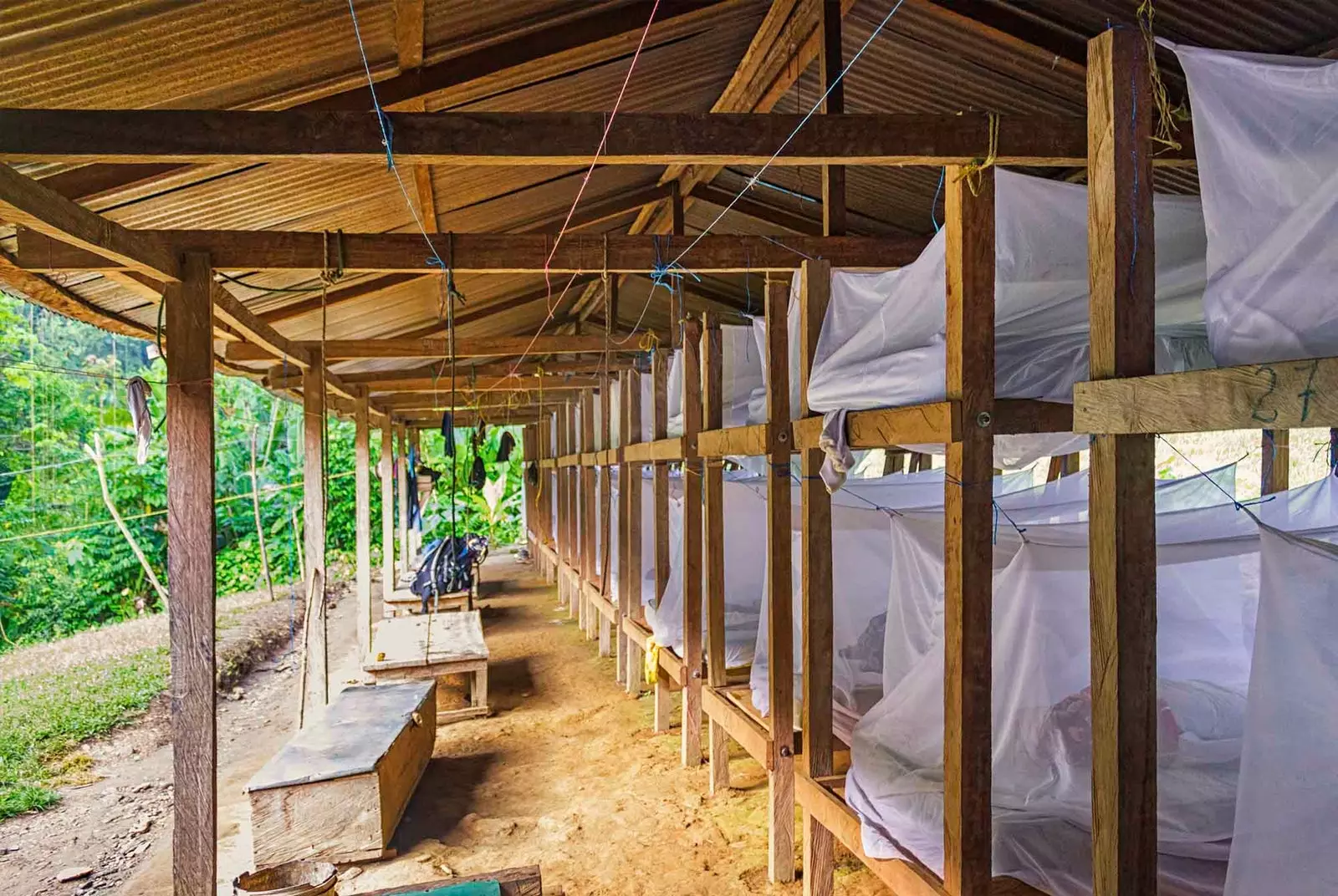
accommodation is simple
FROM GOLD TO TOURISM, PASSING THROUGH MARIJUANA AND COCA
The peasants of this area of the Sierra Nevada tell without hesitation how your economy, and that of the indigenous community, has evolved over time.
First, everything revolved around the Prayed . everyone who the Spanish could not take It was then squeezed by the guaqueros. It is not by chance that these lands are related to the founding myth of The Golden , the city bathed in this metal for which the conquerors and their heirs became wackos.
Later, it was the turn of the dope . International traffickers found in this sierra the ideal conditions for its cultivation. The same thing that would happen later with the Coke , the plant that invaded the slopes of this place and the lives of its inhabitants for decades.
In a logical adaptation to the new times, the same mules that used to transport sacks full of white powder today carry tourists' backpacks who prefer to walk light. Something similar happens with some of the old laboratories where the coca leaf was processed, now reconverted into camps for the rest of hikers.
The road to Teyuna surely has more clues to trace the past of this place and its people. The pity, many will think after returning to the starting point of this route, is that this discovery only lasts four days. And do not continue any longer between the paths of the lush and magical Colombian jungle.
